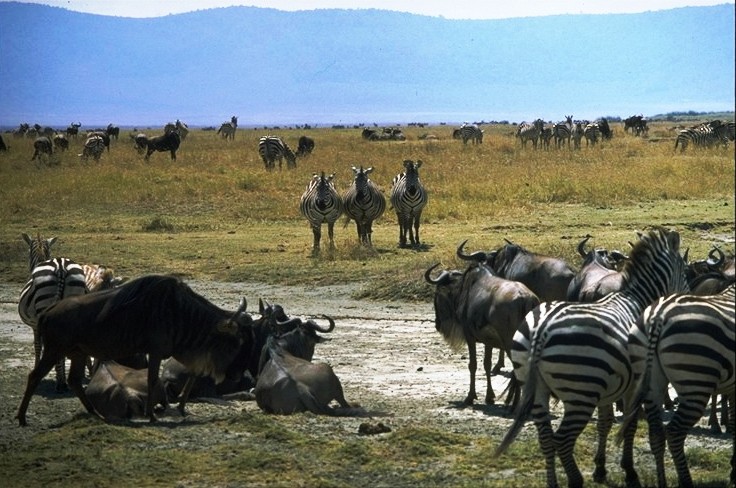The Ngorongo Crater, the Nursery of the Savanne

The Ngorongoro Crater is somehow the maternity ward of the savanna. In February millions of gnus, zebras, gazelles, antelopes and topis are grazing the southern plains of the serengeti. It's calvin season, the gnu babies are the first to be born. All gnus are born at the same time to make sure that only a few became the prey of lions, leopards and hyenas. The gnu mothers know that once the predators are fed up they stop hunting for their little ones. The zebras are the next ones to get their young. Only one hour after birth the zebra foals can walk and run. The young zebras turn the nursery of the savanna into a playground. They play, run around and join the other young foales. It's quite spectacular to see almost half a million little wildebeest running alongside their mothers. In April, when the rain starts, the migratory instinct awakens. It's the gnus who start the move. Now, their young are strong enough to follow the long route in northwestern direction towards the Masai Mara. They are followed by zebras, antelopes and gazelles.

